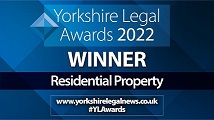Speak to a specialist solicitor at our law firm in North Yorkshire.
RAAC risk from a landlord's perspective
- Posted
- AuthorJames Cornforth
RAAC (‘Reinforced Autoclaved Aerated Concrete’) has been the centre of a recent media storm. A cheaper but weaker alternative to traditional concrete, RAAC was a popular building material in the 1950s especially within public buildings has been referred to a ‘a ticking time bomb’. With a life span of 30-40 years and the possibility of collapse with little to no warning RAAC poses a possible health and safety risk. As RAAC continues to deteriorate questions which have been put off for decades regarding repair obligations, responsibility for safety, and possible tortious claims are questions which will be increasingly asked of property experts.
Presence of RAAC has been documented within public buildings with the media focus being on school buildings and the threat to the children’s safety and the disruption to their learning being the main focus of the media’s attention. However, RAAC has also been used in the construction of private buildings and the extent of its use in commercial and residential constructions between the 1960s and 2000 is unclear.
The first difficulty with managing the risk from RAAC is to ascertain if your building contains it. Without an expert survey it will be difficult to assess if your building contains RAAC and its condition. RAAC is often hidden behind panels and as it was used often as concrete roof panels it is often found in conjunction with Asbestos which the risk of which will also need to be managed adequately. If the building is found to contain or you are already aware a building contains RAAC you should seek an expert engineer’s opinion on the condition of the concrete and the risk, it poses.
As a building owner or controller, it will be your responsibility to ensure you have taken reasonable steps to keep people safe. It will, therefore, also be important to record any steps you do take as part of the process of demonstrating you have considered the risk and taken steps to mitigate it.
From a Landlord and Tenant perspective if the RAAC components of the building are need of repair or replacement the party which will bear the responsibility of repairs will depend on the terms of the lease. However, in the majority of cases Landlords will bear responsibility for repairs to the structure of the building.
Where RAAC is found it is likely the owner of the building will wish to consider a claim against the building’s constructor or designer. However, given the age of the buildings involved the limitation period will prevent any action. Even for buildings which are used as a dwelling where the design poses a risk to the occupants the limitation period will be 30 years. Meaning only the buildings built using RAAC in the mid-1990s which meet these criteria will not be time barred. Even if the matter is not time barred many of the entities which built or designed these properties will no longer be functioning and questions will inevitably arise if a building material coming to the end of its natural life is a result of defective design especially if poor maintenance is the main reason behind its collapse or the risk of its collapse.
Therefore, if you suspect your building contains RAAC you would be well advised to first ascertain the risk and mitigate it. The law and guidance surrounding RAAC is a potentially fast-moving area as the scale of the problem becomes clearer. If repairs are required, our expert team at Crombie Wilkinsons Solicitors will be here to aid you by reviewing the terms of the lease and advising you to their effect.


















